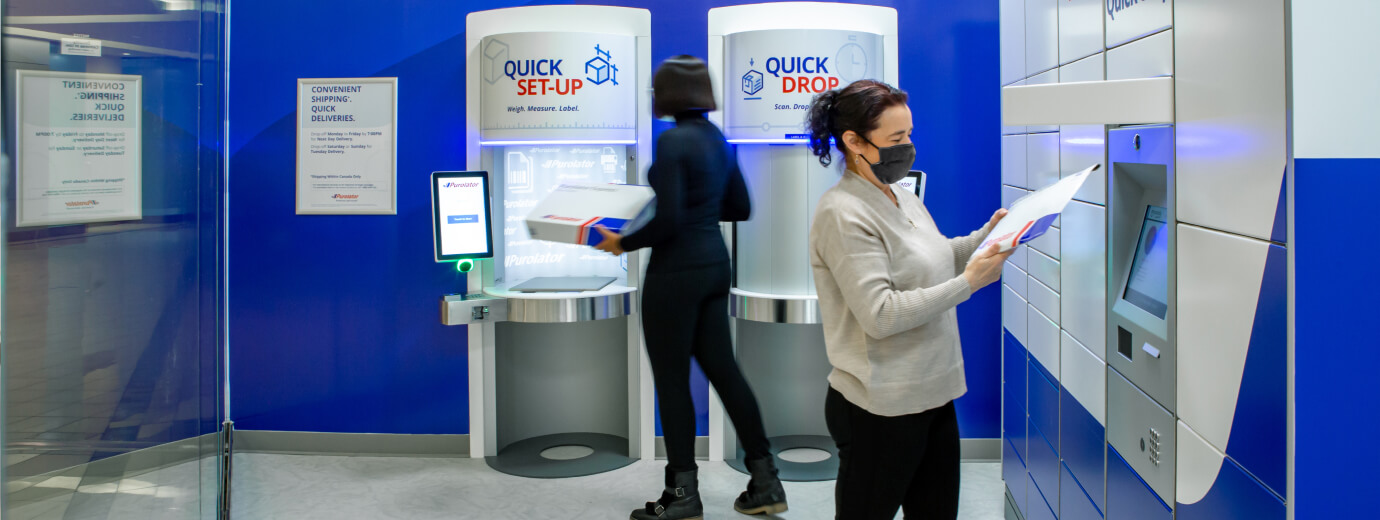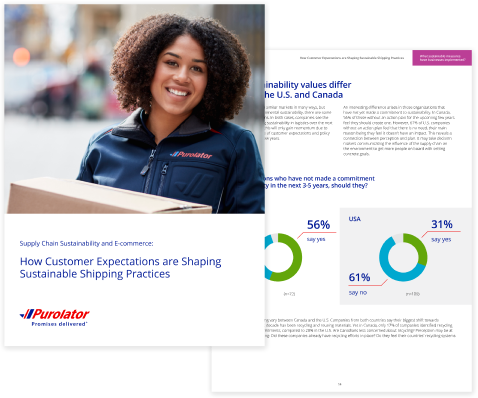If you run an online business, you’re probably familiar with the challenges of e-commerce returns management. Accounting for fraud, customer service costs and product waste equates to financial loss and a black hole in your budget. With online shopping trends continuing to break new record highs with no signs of slowing down, finding the right reverse logistics solution is critical to your bottom line.
More returns: A new way of shopping online
To keep up with consumer trends, companies must rethink their shipping policies and processes to align with the needs of the modern day shopper. Returns were once viewed as an occasional inconvenience for shoppers who changed their mind, ordered the wrong size or received a defective product. As consumers increasingly rely on e-commerce and new technology advances us forward, returns have become an inevitable and important part of the customer journey.
Here are five simple tips to help you make your e-commerce returns an asset to your business.

5 tips for improving your product returns process
Tip #1: Make your return policy easy to find
It’s one thing to have a great return policy, but it doesn’t do you any good if customers can’t find it before they make a purchase. It’s important to clearly outline your return policy throughout your online shopping experience to keep customers from bouncing to your competitors.
Here’s a simple checklist of locations to include your policy on your website so it doesn’t get missed.
How to successfully integrate return logistics into your business? Checkout our latest blog on how to implement Reverse Logistics for your business
Tip #2: Provide multiple ways for customers to get in touch
If a customer wants to contact you about making a return, it’s your job to make it easy for them. Customer satisfaction ratings for live chats are often higher than other means of communication due to the speedy response time. Providing multiple channels is a helpful way to show customers you value their time and business. You can do this by giving them lots of ways to get help with returns—whether it’s via email, social media, a website form, phone or live chat. Opening a line of communication with your customer creates a chance for you to ask about the reason an item was returned. By collecting customer feedback, you can pinpoint the problem so you can take action and avoid future returns.
Another popular return solution is the self-serve return option. Customers can request a return directly via return functionality on your website. Not only does this save your customer time, but it also lightens the load for your customer care team. Win-win!
Tip #3: Be transparent around refund expectations
Most customers want their refund as soon as possible, so it’s critical that you clearly outline the complete return process. You’ll save your customer service representatives lots of time and headaches by addressing the “Where’s my refund?” calls upfront. Set out time restrictions for allowable refunds such as 30 or 90 days from the sale date to clear up any possible confusion.

By consolidating return shipments at Purolator International’s facility, The Orthotic Group cut shipping costs and time, lowered brokerage costs, boosted customer satisfaction and significantly improved reverse logistics processes
Tip #4: Let your customer know if return shipping is free
Free shipping on returns is becoming more prevalent. It’s no longer just a luxury, but an expectation. According to a recent study, 66% of consumers expect free shipping on every purchase. When it comes to the king of shipping priorities, 82% of consumers would prefer free shipping over expedited shipping. By offering free return shipping to your customers, you’re reassuring them that if they change their mind about a product, you’re willing to help them quickly correct it.
Not only do customers want returns free of charge, but they want sustainable handling from their shipping partners. Having sustainable shipping and packaging options is important to consumers in today’s age. According to our research, over the next three to five years, 75% of North Americans say sustainability is important or very important when making a purchase decision. Having the right returns management process in place ultimately helps reduce environmental impact.
Achieving a sustainable supply chain
Sustainability is just as important to us as well. That’s why Purolator is making continuous investments to reduce our environmental impact and help Canadians achieve net-zero emissions by 2050. Learn more about our commitment to environmental sustainability.
Tip # 5: Provide label free shipping options
Asking your customers to create and print their own return shipping labels can be an onerous task, especially if they don’t have the right hardware or printer at home.
47% of shoppers want an easy-to-print return label.
Supplying return shipping labels or having label-printing capabilities at retail locations or self-serve kiosks improves the returns experience.
One easy and affordable solution is by adding a QR code to your existing customer return email template. By partnering with a shipping provider that offers label free services at its retail locations, your customer would simply need to:
- Bring their packaged return shipment to a participating shipping location
- Present QR code to associate or kiosk for printing
- Affix label to their package

Checkout our latest blog on 13 Types of E-commerce Fraud and How to Prevent Them? Spot the red flags of fraud before it impacts your business.
Prioritize customer convenience
E-commerce returns are becoming an important brand differentiator in the retail experience—both in-store and online. You can create a continuous cycle of convenience and grow your brand loyalty by providing simple return options for your customers.
By partnering with Purolator, your customers will have the luxury of choice. Using The Purolator Mobile® App or via our website, they will be able to find a nearby return location amongst our 1,800+ retail locations across Canada, including convenient drop boxes, parcel lockers, self-serve kiosks and shipping centres.
